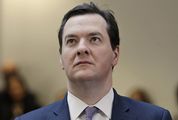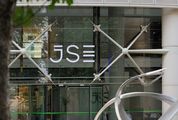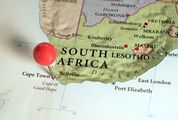Fears in US that Brexit may hurt local consumption
by Lucia Mutikani
2016-06-30 06:48:07.0
US CONSUMER spending rose for a second straight month in May on increased demand for vehicles and other goods, but there are fears Britain’s vote to leave the EU could hurt confidence and prompt households to cut back on consumption.
The commerce department said on Wednesday consumer spending, which accounts for more than two-thirds of US economic activity, increased 0.4% in May, pointing to an acceleration in economic growth in the second quarter.
Consumer spending in April was revised up to show it advancing 1.1% instead of the previously reported 1% jump.
May’s increase in consumer spending was in line with economists’ expectations.
Last Thursday’s "Brexit" referendum wiped off an estimated $3.01-trillion from global stock markets over two days. Most global equities have since recouped some of the losses, with stock markets in Europe and Asia rising for a second day on Wednesday.
US stocks were poised to open higher.
Economists said sustained financial turbulence could hurt consumer confidence and cause companies to either delay or scale back capital projects, exerting further downward pressure on business investment. So far, economists are forecasting that Brexit will subtract an average of two-tenths of a percentage point from US growth over the next six quarters.
When adjusted for inflation, consumer spending increased 0.3% in May after gaining 0.8% in April. May’s increase and April’s solid gains could prompt economists to raise their forecasts for second-quarter consumer spending and economic growth.
Consumer spending rose at a 1.5% annual rate in the first quarter, holding down GDP growth to a 1.1% pace. The Atlanta Federal Reserve is estimating second-quarter GDP rising at a 2.6% rate.
Despite the steady gains in consumer spending in May, inflation remained benign.
The personal consumption expenditures (PCE) price index, excluding the volatile food and energy components, rose 0.2% after a similar gain in April.
In the 12 months through May the core PCE increased 1.6% after rising by the same margin in April.
The core PCE is the US Federal Reserve’s preferred inflation measure, and is running below the US central bank’s 2% target.
In May, consumer spending was boosted by a 0.3% jump in purchases of long lasting manufactured goods, such as vehicles. Spending on services rose 0.4%; personal income rose 0.2% after advancing 0.5% in April; wages and salaries gained 0.2%. Savings slipped to $730.6bn in May from $753.7bn in April.
Reuters

Patrons play shuffleboard and drink beer at Brave Horse Tavern in the South Lake Union neighborhood of Seattle, Washington, US., on Thursday, June 9, 2016. In 2010, Amazon.com Inc. moved to South Lake Union speeding the neighborhood's transformation into a vibrant business district. Photo: DAVID RYDER/BLOOMBERG
US CONSUMER spending rose for a second straight month in May on increased demand for vehicles and other goods, but there are fears Britain’s vote to leave the EU could hurt confidence and prompt households to cut back on consumption.
The commerce department said on Wednesday consumer spending, which accounts for more than two-thirds of US economic activity, increased 0.4% in May, pointing to an acceleration in economic growth in the second quarter.
Consumer spending in April was revised up to show it advancing 1.1% instead of the previously reported 1% jump.
May’s increase in consumer spending was in line with economists’ expectations.
Last Thursday’s "Brexit" referendum wiped off an estimated $3.01-trillion from global stock markets over two days. Most global equities have since recouped some of the losses, with stock markets in Europe and Asia rising for a second day on Wednesday.
US stocks were poised to open higher.
Economists said sustained financial turbulence could hurt consumer confidence and cause companies to either delay or scale back capital projects, exerting further downward pressure on business investment. So far, economists are forecasting that Brexit will subtract an average of two-tenths of a percentage point from US growth over the next six quarters.
When adjusted for inflation, consumer spending increased 0.3% in May after gaining 0.8% in April. May’s increase and April’s solid gains could prompt economists to raise their forecasts for second-quarter consumer spending and economic growth.
Consumer spending rose at a 1.5% annual rate in the first quarter, holding down GDP growth to a 1.1% pace. The Atlanta Federal Reserve is estimating second-quarter GDP rising at a 2.6% rate.
Despite the steady gains in consumer spending in May, inflation remained benign.
The personal consumption expenditures (PCE) price index, excluding the volatile food and energy components, rose 0.2% after a similar gain in April.
In the 12 months through May the core PCE increased 1.6% after rising by the same margin in April.
The core PCE is the US Federal Reserve’s preferred inflation measure, and is running below the US central bank’s 2% target.
In May, consumer spending was boosted by a 0.3% jump in purchases of long lasting manufactured goods, such as vehicles. Spending on services rose 0.4%; personal income rose 0.2% after advancing 0.5% in April; wages and salaries gained 0.2%. Savings slipped to $730.6bn in May from $753.7bn in April.
Reuters




















